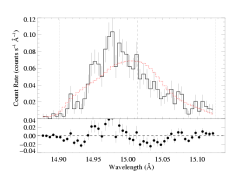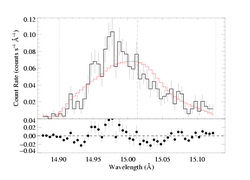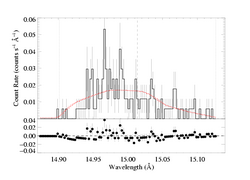Exploring the effects of including HEG data in the fit
Anisoporosity
We have already displayed the best-fit model parameters and shown the confidence region plots for the combined MEG and HEG fits of an anisotropic porosity model. Here we will also show the constrained (taustar=8, frozen) models fit to the combined data.
The best-fit model with anisotropic porosity and taustar fixed at 8, fit only to the MEG data:
Here is the same type of anisoporous model fit to both the MEG and HEG data simultaneously:
Note that ΔC=48 (compared to the global best-fit model, which has zero porosity length), highly ruling out this model (somewhat moreso than is the case with the MEG data alone). However, it's a bit fishy that the MEG data/model agreement looks better here than when we fit the MEG data alone (first plot on this page). And that the rejection probability is lower now than it was for the MEG data alone.
Back to main page.
last modified: 25 April 2008


